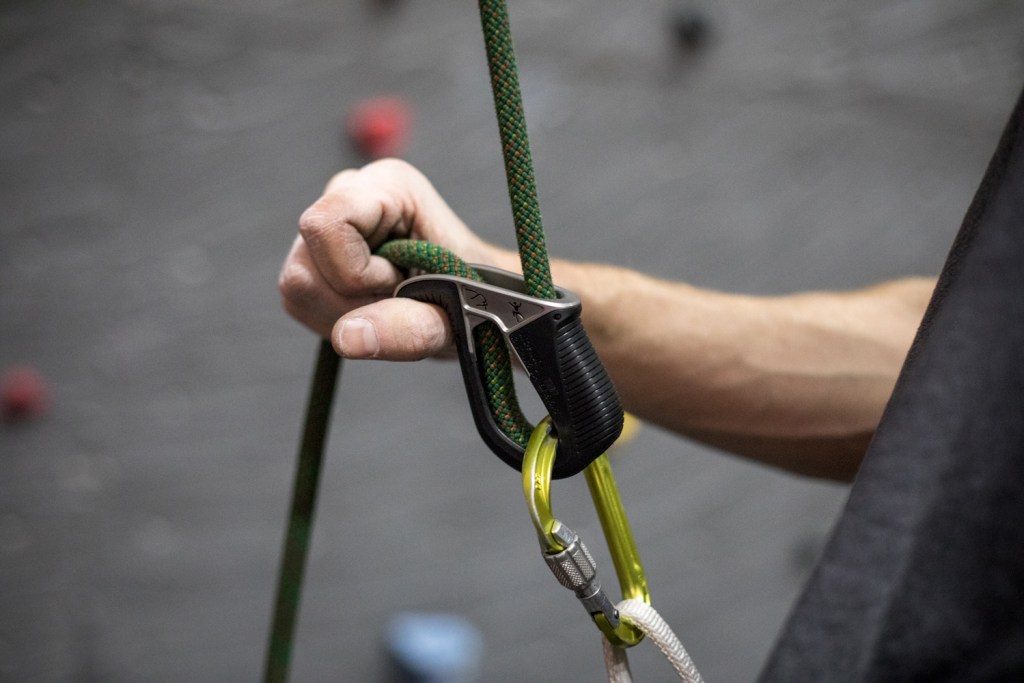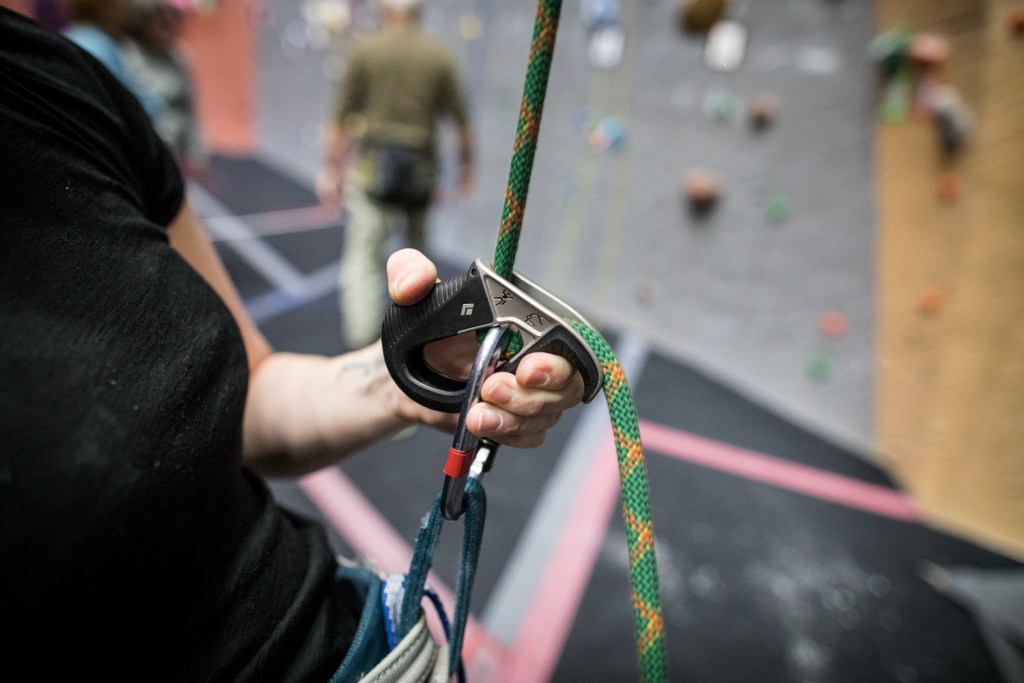A lightweight assisted braking belay device for single-pitch climbs at the gym and outdoors.
If you’ve ever belayed a climber who is working a route, you know just how strenuous belaying can be. Catching repeated falls and holding a hanging climber while they rest up to give a tough move another go can leave your hands and forearms completely worn out. This is where assisted braking belay devices shine; they can make belaying less tiring while also helping you catch falls and lower a climber in a controlled manner.
Black Diamond recently joined the ranks of companies offering an assisted braking belay device with the release of the ATC Pilot Assisted Braking Belay Device. When I was asked to test it out, I was happy to have an excuse to head to a local Seattle climbing gym for a few hours. A couple friends came along and we took turns belaying, leading and falling.
Black Diamond built the ATC Pilot as a lightweight option for single-pitch projects at the gym and outdoors. That’s why when you look at the device, you’ll notice there’s room for only one strand of rope rather than two like a standard tube-style device. (Since it can’t accept a second strand of rope, it is not possible to do a standard double-rope rappel, which means it’s not a great choice for multipitch climbing.) The ATC Pilot weighs only 86g (making it one of the lightest assisted braking devices available) and it accepts ropes from 8.7–10.5mm in diameter, which accommodates most single ropes.
As with other assisted braking belay devices, the ATC Pilot is intended to make catching and holding falls easier than with a standard tube-style device. The ATC Pilot does this by simply pinching the rope between your belay ‘biner and the device when the rope is weighted, whereas some other devices, like the Petzl GRIGRI, use camming mechanisms to grab the rope. As the belayer, assisted braking means less straining to hold a climber who is working out the moves to a tricky climb. As a climber, it adds a level of reassurance that a fall will be securely held. (Let me be perfectly clear about this: Assisted braking does not mean you’re off the hook as a belayer. No matter the belay device, a good belayer is an attentive belayer, so always pay attention to your climber, always use good belay technique and ALWAYS keep your brake hand on the rope.)
After testing the Black Diamond ATC Pilot at the gym, here’s what I came away with:
It was intuitive: The ATC Pilot works in much the same way that a standard tube-style belay device does, with the added benefit of assisted braking. There are no moving parts or levers to operate, making it a user-friendly intro to the world of assisted braking belay devices. As with other belay devices, you need to be sure you insert the rope so that it is aligned correctly with the rope going to the climber and the rope going to your brake hand.

Paying out rope took a little getting used to: The first time using the ATC Pilot, I found it a little tricky to get the hang of paying out rope smoothly when my climber went to clip a quickdraw on lead. Naturally, the device wants to lock up when the climber tugs on the rope. You can counter this by moving your brake hand up along the rope until your thumb rests in the curved lip of the device. A bit of upward pressure from your thumb keeps the device from locking, letting you pay out rope quickly with your other hand. In order to do this smoothly, I found that I had to really focus and anticipate when my climbing partner would go for a clip so that I could get my brake hand in position. My partners didn’t nitpick, but I know my first couple belays were jerky while I was getting used to this motion. After a few climbs it became more natural and smooth.

Lowering was simple and smooth: With other assisted braking belay devices, I’ve sometimes struggled to find the sweet spot where I’ve released the assisted-braking function just enough to lower the climber efficiently yet gradually. With the ATC Pilot, this was simple. You release the assisted-braking function with your non-brake hand by rotating the device toward you. I found it really easy to control the lowering speed by adjusting how much I rotated the device and how tight my brake-hand grip was on the rope.
It let a little rope through: While holding the weight of a climber, the device tended to let a little bit of rope through. To stop this, I only had to angle the rope sharply down and apply a very small amount of force (way less force than I have to apply to hold a climber with a standard tube-style device). As long as I was aware of the position of my brake hand (which is really not a big deal because you should ALWAYS be aware of this), the device did its job. I didn’t have a chance to fully test this theory, but I think the little bit of slip may be due to the belay device/carabiner combo that I was climbing with (I tried both a Black Diamond Mini Pearabiner Screwgate Locking Carabiner and a Petzl Attache 3D Screw-Lock Carabiner.) It’s possible that a larger, wider ‘biner may lock the rope off more effectively.
Final thoughts: All-in-all, I was impressed with the ATC Pilot belay device and will consider adding it to my harness for gym climbing and single-pitch sport climbing outside. It’s lightweight, fairly simple to use and effective at catching and holding falls.
Specs:
Weight: 86g (3.03 oz.)
Fits rope sizes: 8.7–10.5mm
